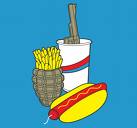
|
Pediatric Occupational, Physical, ABA/Behavioral, Feeding, Speech, and Language Therapies Main Clinic: 931-372-2567 1445 East 10th Street Cookeville, TN 38501 Email: [email protected] HIPAA Secure Email: [email protected] Fax: (931) 372-2572 ABA Clinic: 931-201-9534 400 Dubois Road Cookeville, TN 38501 Email: [email protected] Please call today to get started! Most insurances accepted! |

|
| Who needs therapy? | SE HABLA ESPAÑOL |
ADD/ADHD Research Study

ADDitives and ADHD Research Study
ADHD is a common group of symptoms that mean a child is having problems learning, socializing and focusing. Parents and teachers complain of inattention, hyperactivity, and impulsivity, and less emphasis has been placed on what it must feel like to have the symptoms-to not be able to control one’s self, play with other children, and please caring adults. Let’s call ADHD and its set of symptoms an unsolved problem. This problem is really about the quality and richness of life in a growing child; how can the quality of life of children with this problem be improved? A very simple answer, though it may not prove to be the only answer, has been fund. Research has recently found that some ingredients in common foods, when ingested, inhibit children to flourish and grow to the full extent of their capabilities. It is daunting to find how easy it is to buy and consume products that are unsafe, but there is healthy nutrition available, and because these ingredients have not been banned, it is the consumer’s responsibility, our responsibility, to ensure the safety of our families. So one proven answer to the problems ADHD presents is to eliminate artificial preservatives and colors from children’s diets.
A study conducted by the
Until further research is done, the safety of other additives is unknown, and it is left to the parents to decide if this is significant enough to generalize to all artificial ingredients. This is not the only study to find artificial colors harmful. European Food Safety Authority (EFSA) concluded that the coloring Red 2G (E120), found in some breakfast sausages and burger meat, may cause cancer in animals and humans, so the evidence against these additives is adding up.
These artificial colorings and additives can also be found in most candies. An extremely bright, unnatural color is a good indication of food coloring like in Lifesavers and Jelly Beans. Most candies, though they may boast to be low calorie and/or fat free, probably include artificial colors.
Sodium Benzoate is most often found in soft drinks but can also be found in many other foods for preservation like condiments and pickles. Sodium benzoate is also used as an anti-icing fluid in automobiles and has previously been found to become carcinogenic when mixed with the additive vitamin C and has changed the DNA of mitochondrial yeast cells in the laboratory. Sodas were not explicitly used in the new research, but there are many reasons not to drink soda, one being that it “dissolves away your skeletal system.” Previous studies found a strong link between children’s consumption of soft drinks and “behavioral difficulties, hyperactivity, mental distress and overall mental health problems.”
The new evidence is compelling to suggest additives can cause behavior problems, but the argument can be made that some children are born with behavior problems. While some symptoms may essentially be a part of a child’s DNA, it may also be a possibility that toxins from the parents played a part in creating the problems before birth. The Environmental Working Group found 287 chemicals newborn babies from their parents and the environment. Could these be contributing to health and attention problems? Could it be also be possible that food additives eaten by the parents, especially by the mother during pregnancy, are determining the child’s temperament before birth? There is a huge gap open for further research, and in the meantime, we must be conscious of our choices for ourselves and our children, born and unborn.
Site empowered by
WebOnTheFly